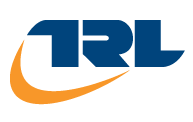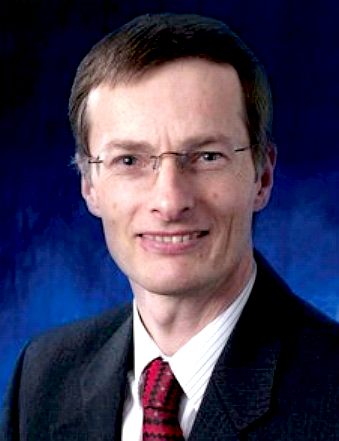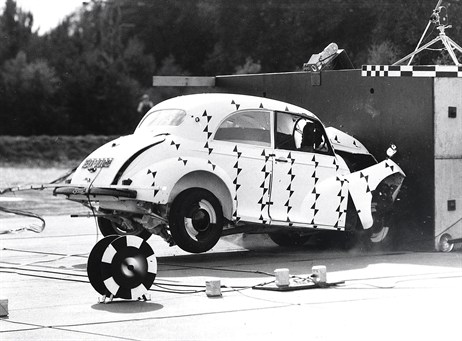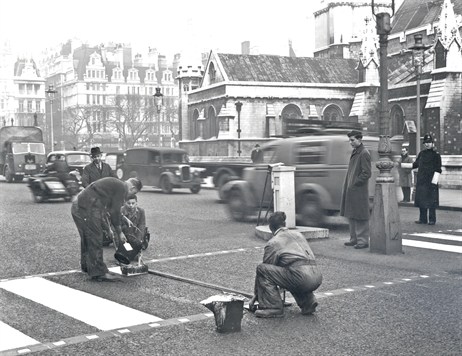|

2013
80th ANNIVERSARY - In
2013 the TRL celebrated its 80th birthday.
The RRL (Road Research Laboratory), was created when the Ministry of Transport's Experimental Station, formed in 1930 at
Harmondsworth, near Heathrow, southern England, was transferred to the Department of Scientific and Industrial Research
(DSIR). Much of its work then concentrated on road materials and methods of construction.
VISION
TRLs
desire to create the future of transport is under-pinned by their vision to be a world leader in evidence-based transport solutions that are efficient, accessible, clean and safe. This is rooted
in the knowledge base they create; the flexibility and dynamism of
approach to problems; incisiveness in problem solving and the making of
decisions. Their intellect thrives on continuous learning and skills development; the integrity
they have in all that they do and this their credibility. All of these core values come together to inspire confidence in
customers and partners they are able to meet their requirements in every way.

Dr Alan Stevens is the Chief Research Scientist and Research Director, Transportation at TRL where he has been working on the application of new technology to transport for 25 years.
After training as a physicist and research on medical imaging, he worked as part of the team developing the first vehicle
number-plate readers. At TRL his initial work on route guidance and mapping systems led to an interest in human factors and driver interaction.
He is an internationally recognised expert in “Human-Machine Interaction”
(HMI) in the driving environment and was co-author of the authors of the “European Statement of Principles on
HMI" through his work within the eSafety initiative, where he co-chairs of the HMI Working Group. He was also an active member of the responsible international standards committee regularly participating in meetings with European, US, Canadian and Japanese colleagues.
He was recently appointed to the EU-US Working Group on Driver Distraction following the EU-US High Level Cooperation agreement and continues to be involved in the international IHRA (International Harmonized Research agenda) group and on the Management Committee of IBEC (International Benefit Evaluation and Costs) group and has a continuing research interest in techniques to assess the safety and benefit of Intelligent Transport Systems (ITS).
His consultancy activities focus on providing advice on policy and interoperability issues to Government, developing research programmes and carrying out specific technical and human factors studies in Intelligent Transportation Systems. In terms of academic activities, he participates in University teaching at MSc level, supervises PhD students and is Editor in Chief of an international peer-review journal of Intelligent Transport Systems.
CORPORATE
HISTORY
1933
- TRL was originally established in 1933 by the UK Government as the Road Research Laboratory
(RRL) under the Department of Scientific and Industrial Research, and later became the Transport and Road Research Laboratory
(TRRL).
1938 - Richard Stradling, director, wrote that "the objective of all the research work at RRL [now TRL] is to accumulate that body of scientific knowledge which is an essential factor in the economical and efficient construction and maintenance of our roads. Practical application of the results must be the aim throughout." While TRL's remit today is far more wide-reaching, from the development of tools to assist engineers in the design of roads and junctions to increase capacity and ease congestion, ITS technologies that deliver traveller information and road user charging capabilities, to environmental performance and strategic assessment, sustainability and climate change, it continues to deliver evidence-based solutions to help its customers solve modern day transport issues.
1939 - The focus switched at the
start of the second world war when RRL was allocated military research, and it became involved in work on the
Dambusters' 'bouncing
bomb', also contributing to the war effort. under William Glanville with
research that aided the development of plastic armour and the Disney bomb.
1946 - RRL's road safety division was formed at Langley Hall near Slough, west of London. Work included studies of accident data, traffic flow, junction design, street lighting, vehicle safety (initially lighting and braking) and pedestrian crossings.
Crossings at this time were marked using metal studs in the road surface and unlit Belisha beacons [named after UK Minister of Transport Leslie Hore-Belisha].
Model crossings were set up to investigate colour, texture, lighting and wetness. It was concluded that alternating 2ft (0.6m) wide black and white stripes laid parallel to the kerb (Zebra pattern) were most conspicuous. At night, no surface patterns showed up well unless lit by an overhead lamp. Experimental crossings were laid and it was found that compared to conventional markings, Zebra crossings were more visible to drivers and led to better observation of crossings by both pedestrians and drivers.
1951
- In October of this year regulations required all uncontrolled pedestrian crossings to have Zebra markings and other road users to give precedence to pedestrians.
1955 - RRL's Colonial Research Section was formed, becoming the Tropical Section in 1959 and the Overseas Unit in 1972.
The work investigated the particular problems of transport in developing countries, initially concentrating on road materials and construction, but grew to include traffic engineering and road safety. Part of RRL's role was the dissemination of information through courses and publications such as the annual Tropical Roads Course which has been held in the UK and at various venues around world for over 30 years. Similarly, Overseas Road Note (ORN) series of guidance documents, introduced in 1981, can be found in the offices of thousands of transportation professionals around the world.
In the 1950s increased car ownership began to manifest itself with a rise in occupant facilities and injury. Analysis of hospital records and accident investigation data at this time revealed a high incidence of head and chest injuries (for example from unrestrained drivers hitting the steering wheel). Three-quarters of single vehicle impacts were to the front of the car.
1960 - >>> all available information on road design was drawn together to produce Road Note 29, A Guide to the Structural Design of Flexible and Rigid Pavements for New Roads.
Since then design guidance has been regularly updated: a fundamental re-look at the approach to pavement design is ongoing.
1961 - This finding led to RRL conducting its first full-scale frontal impact test, with cars impacting a 114tonne block at 60-70km/hr. Three years later, the work had clearly demonstrated the importance of wearing seat belts and the need to coordinate the design of the seat, seat belt, passenger compartment and crushable front of the car in order to minimise the deceleration experienced by the occupants.
1967 - The Crowthorne offices, also west of
London, were opened, bringing staff together from Harmondsworth and Langley Hall.
1970
-
In the 1970s, the TRRL moved from the Department of Trade and Industry to the Department of the Environment.
1972 - Another change of name recognised RRL's increased capability. Now the Transport and Road Research Laboratory (TRRL), work included studies of bridges, tunnels, road user behaviour, road pricing, public transport and the environmental impacts of vehicles.
1975
- At the TRRL, Frank Blackamore developed the mini-roundabout which was adopted
nationally.
1992 - Twenty years later TRRL became an Executive Agency of the Department of Transport and its name changed to the more familiar Transport Research Laboratory. TRL competed for work from the Department and was able to bid for contracts from other organisations.
Throughout this time, RRL, TRRL, TRL has worked on developing better roads, looking at the issues of skid resistance, road materials, methods of construction, and measurement of road characteristics.
In the past, road characteristics were measured manually or by slow-moving machines. Now thanks to the development of
laser and image collection equipment, more reliable information can be gathered in a more cost effective way using traffic speed survey vehicles such as HARRIS1 & 2 (surface deformation) and the Traffic Speed Deflectometer (structural strength).
1996 - TRL was privatised as a limited company, and the transformation was complete when TRL moved to Crowthorne House, its new purpose-build head office, with state-of-the-art research facilities.
TRL Limited, trading as the Transport Research Laboratory, is a fully independent private company offering a transport consultancy and research service to the public and private sector. Originally established in 1933 by the UK Government as the Road Research Laboratory (RRL), it was privatised in 1996.

OPERATIONS
TRL is based in Crowthorne, Berkshire, with additional offices in Scotland and
Wales.
TRL's key areas of work include road, network and vehicle safety; traffic management; planning and control; investigations and risk management; transport infrastructure; and environmental assessment including work on climate change, noise and air pollution.
The extensive original site has been substantially scaled back, with many many of the original buildings disused, creating an opportunity for redevelopment. In 2012, Bracknell Council has identified the original site as a strategic area, suitable for a new mini-town of 1,000 homes.
TRANSPORT RESEARCH FOUNDATION
To maintain its commercial independence and impartiality, TRL is owned by the Transport Research Foundation, a non-profit distributing foundation overseen by 80 sector members from the transport industry. TRL's profits are invested in its own research programmes, selected by the TRF to enhance knowledge in critical areas such as safety, environmental impact and sustainable development.
THE
FUTURE OF TRANSPORT
One
day it might be possible to teleport people and goods from one location
to another. Until then,

CONTACTS
TRL
Crowthorne
House, Nine Mile Ride
Wokingham,
Berkshire
RG40
3GA, United Kingdom
Tel:
+44 (0) 1344 770297
Our
Vision and Strategy
Corporate
Governance
Key
Facts
Key
Clients and Partners
Our
History
Where
to Find Us
Road
Rail
Automotive
Cycling
and Walking
Legal
Defence
and Security
Safety
Attitudes
& Behaviour
Road
& Rail Infrastructure
Asset
Management
Sustainability
Intelligent
Transport Systems
Transport
Futures
Testing
& Certification
Software
Transport
News
Transport
Events Diary
Video
Newsroom
TRL
Newsletter
Media
Contacts
RSS
Feeds

THE
DEVONSHIRE PROJECT: Shown
above is a CAD drawing of the Bluebird™ 3.6MW solar assisted service
station containing 60 cartridges on a continuous charge cycle. It is
estimated that five of
these stations (18MW) could recharge (refuel) 5 cars a minute. Next time
you visit your BP
or Tesco fuel
pump, count the number of cars leaving the station in a minute. You will
find that an electric forecourt holds the potential to be quicker.
During rush hour, 300 cars might be serviced in one hour, drawing on
energy stored for an average 2 hour recharge cycle - 12 hours of which
is off using off-peak electricity. During an
eight hour day 2,400 cars might be serviced - with the equivalent
battery charge cycle of one hour at peak times. Alternatively 600 cars
might be serviced per day with an average 8 hour charge cycle. The same forecourt might be used to
service fuel-cell cars powered by liquid hydrogen. One size fits
all.
Increase
the number of stations (or increase the number of modules per station to
2) to give 10 units at 5 stations, and the charging time may be
increased even more to extend battery life. The same principle is
applied to petrol
service stations. The more the anticipated demand, the more pumps are
installed and the bigger the underground storage tanks.
SMART
CITIES A
Smart city is one that uses sustainable energy for transport, with the
infrastructure to support such agenda planned as staged developments
over a given timeframe. At present there is no such plan, study or
agenda - simply because the Bluebird system is not yet part of
government thinking. We know this because to date we have not been
contacted to discuss the possibilities that such a system might eventually
mean for the United Kingdom.
LINKS
World
Highways trl delivers its vision TRL
UK Italy
Ministry of Transport Wikipedia
Transport_Research_Laboratory USA
Department of Transport ITS
International Route One Publishing http://www.dot.gov/
http://www.itsnetwork.org/ http://www.worldhighways.com/sections/eurofile/features/trl-delivers-its-vision/
http://www.trl.co.uk/
http://en.wikipedia.org/wiki/Transport_Research_Laboratory
http://www.2020visionnetwork.eu/sme/
http://erc.europa.eu/funding-schemes
http://www.mit.gov.it/mit/site.php
http://ec.europa.eu/research/horizon2020/index_en.cfm
Siemens http://www.siemens.com/entry/cc/en/
EU
funding schemes Horizon
2020
|




